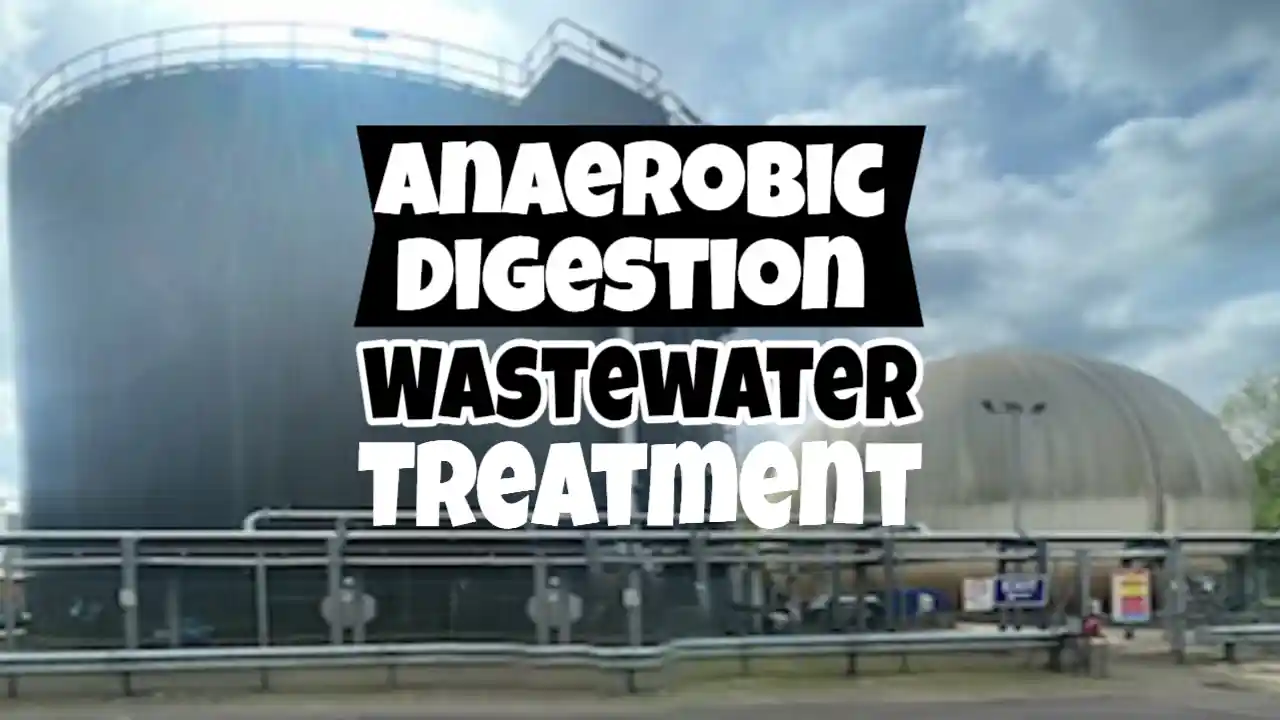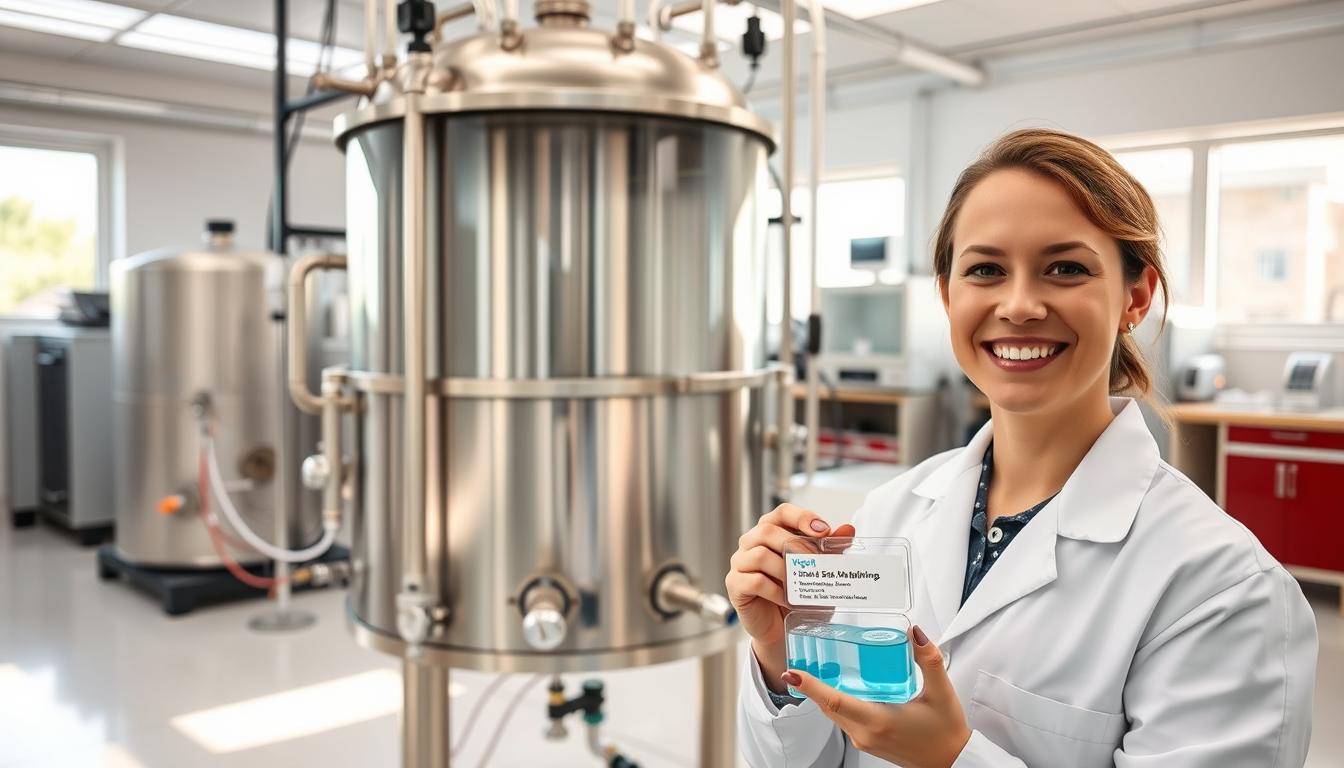Anaerobic Digestion Wastewater Treatment: Solutions for Sewage Sludge Processing
Did you know that anaerobic digestion can transform wastewater treatment into an efficient source of renewable energy, while also solving the problem of sewage sludge disposal? This innovative process not only reduces waste but also contributes significantly to environmental sustainability. Let’s delve into what you can learn about this remarkable technology.
What You Will Learn
- Anaerobic digestion is a vital process for breaking down organic matter without oxygen, leading to effective sewage sludge waste management.
- The process generates biogas, which can be harnessed as a renewable energy source, enhancing energy efficiency at wastewater treatment facilities.
- Key benefits include nutrient recycling through digestate, which can improve soil health as a natural fertilizer.
- Implementing anaerobic digestion reduces landfill use, improves water quality, and fosters community energy production and job growth.
- Understanding the role of anaerobic bacteria is essential for optimizing the efficiency of the digestion process.
- Real-world applications demonstrate significant improvements in operational efficiency, cost savings, and environmental impact at treatment plants.
- Community support and engagement increase as local sewage works facilities transition to anaerobic digestion, promoting sustainability and environmental stewardship.
Understanding Anaerobic Digestion in Wastewater Treatment
Anaerobic digestion is an important process in wastewater treatment that helps break down organic matter without the presence of oxygen. This technique not only reduces the volume of waste but also produces biogas, which can be used as a renewable energy source. Understanding this process is crucial for improving waste management strategies and promoting environmental sustainability.
By harnessing the power of anaerobic digestion, facilities can manage wastewater more effectively while minimizing their environmental footprint. It’s vital to recognize the numerous benefits that arise from this technology, including energy generation, nutrient recovery, and reducing pollution levels in our ecosystems.
Let’s explore what anaerobic digestion entails and why it’s essential for wastewater management.
Defining Anaerobic Digestion and Its Importance
Anaerobic digestion involves the breakdown of organic materials by microorganisms in environments devoid of oxygen. This natural process converts waste into valuable byproducts, such as biogas and digestate, which can be further utilized. The importance of anaerobic digestion lies in its ability to mitigate the impact of wastewater on the environment while providing renewable resources.
Some key aspects of anaerobic digestion include:
- Waste Reduction: It effectively reduces the amount of solid waste.
- Energy Production: Biogas generated can be used to produce electricity or heat.
- Nutrient Recycling: The digestate can be used as a fertilizer, returning nutrients to the soil.

Overview of the Anaerobic Digestion Process
The anaerobic digestion process consists of several stages, each contributing to the breakdown of organic matter. First, waste enters the digester, where anaerobic bacteria begin to decompose it. As these bacteria work, they produce biogas, primarily consisting of methane and carbon dioxide.
This process can be broken down into four main stages, which we will explore in greater detail later. Understanding this flow is essential for optimizing the efficiency of anaerobic digestion systems and improving overall wastewater management practices.
Significance of Anaerobic Digestion in Wastewater Management
Anaerobic digestion plays a significant role in the management of wastewater, offering not just a method for waste treatment, but also a path to sustainability. By reducing the volume of sludge, facilities can lower disposal costs and environmental impact. Moreover, the nutrients recovered from the process can help improve soil quality.
Additionally, incorporating anaerobic digestion into wastewater management can lead to:
- Less Landfill Use: Reduces the need for landfill space.
- Improved Water Quality: Helps filter out pollution from wastewater.
- Community Benefits: Encourages local energy production and job creation.
Role of Anaerobic Bacteria in the Digestion Process
Anaerobic bacteria are the unsung heroes of the digestion process. These microorganisms thrive in oxygen-free environments and play a critical role in breaking down complex organic materials. Without them, the entire process of anaerobic digestion would not be possible.
These bacteria work in a symbiotic relationship with each stage of the digestion process, ensuring efficient decomposition. Their effectiveness can be influenced by various factors, including:
- temperature,
- pH levels, and
- the types of waste being processed.
Recognizing the importance of anaerobic bacteria can help improve the efficiency of wastewater treatment systems.

Key Stages of Anaerobic Digestion
The process of anaerobic digestion consists of several key stages that work together to convert organic waste into biogas and digestate. Each stage plays a vital role in breaking down complex organic materials into simpler compounds. Understanding these stages is essential for optimizing the anaerobic digestion process and enhancing its overall efficiency.
Anaerobic Digestion Process Stages
1. Hydrolysis
Breakdown of complex organic materials into simpler compounds.
2. Acidogenesis
Conversion of simple compounds into volatile fatty acids and alcohols.
3. Acetogenesis
Further breakdown into acetic acid, hydrogen, and carbon dioxide.
4. Methanogenesis
Production of biogas, primarily methane, from the breakdown products.
This diagram illustrates the four key stages of anaerobic digestion, highlighting their roles in the breakdown of organic waste into biogas.
By recognizing the significance of each stage, wastewater treatment facilities can better manage their operations and improve biogas production rates.
Real-World Applications of Anaerobic Digestion
Anaerobic digestion plays a crucial role in wastewater treatment, and real-world applications demonstrate its effectiveness. Many wastewater treatment plants have successfully integrated anaerobic digestion into their processes, showcasing the benefits that come from utilizing this technology. By examining various case studies, we can gain insights into how anaerobic digestion improves overall wastewater management.
In many instances, the successful implementation of anaerobic digestion has led to enhanced efficiency and productivity at treatment facilities. The results not only reflect operational success but also highlight the positive impact these processes have on the surrounding communities and environments.
Case Studies from Wastewater Treatment Plants
Several wastewater treatment plants have shared their success stories with anaerobic digestion systems. These case studies illustrate the diverse applications and the benefits achieved through the process. Here are just a few examples:
- Plant A: Increased methane production leading to energy self-sufficiency.
- Plant B: Significant reduction of biosolids disposal costs.
- Plant C: Enhanced nutrient recovery, positively impacting local agriculture.
Success Stories Highlighting Process Efficiency
Many plants report operational improvements due to anaerobic digestion. For instance, some facilities have noted enhanced process stability, allowing them to handle varying organic loads more effectively. This stability leads to increased breakdown of organic materials and higher energy yields, which is a win-win for all involved!
Additionally, plants have successfully reduced their energy costs by utilizing the biogas generated as a renewable energy source. This transformation not only cuts energy expenses but also contributes to sustainability goals within the community.
Testimonials from Operators and Stakeholders
Operators and stakeholders have shared their positive experiences with anaerobic digestion systems. Many highlight the ease of operation and maintenance, making it a practical choice for wastewater treatment facilities. Here are a few testimonials:
- “The transition to anaerobic digestion has been seamless, and we’re seeing fantastic results in both efficiency and energy recovery!”
- “This technology has allowed us to turn waste into resources, benefiting the environment and our bottom line.”
- “Community support for our plant has grown significantly since we implemented anaerobic digestion.”
Community Impact of Implementing Anaerobic Digestion
Anaerobic digestion not only benefits wastewater treatment facilities but also has a positive impact on local communities. The reduction of odors and pollutants associated with wastewater management leads to a healthier environment for residents. Moreover, the production of renewable energy can support local energy needs, fostering a sense of community pride.
Furthermore, nutrient recovery from the digestate can be a boon for local agriculture, providing farmers with high-quality organic fertilizers. This creates a cycle of sustainability that promotes community engagement and environmental stewardship.
Summary of Anaerobic Digestion Wastewater Treatment Sludge Benefits
In summary, anaerobic digestion provides a multitude of benefits that extend beyond wastewater treatment facilities. From increased energy efficiency to community engagement, the real-world applications of this technology are impressive. By embracing anaerobic digestion, we can build a more sustainable future!
Recap of Key Points and Insights
Let’s recap some of the essential benefits of anaerobic digestion:
- Improved process efficiency and stability at treatment plants.
- Cost savings through energy recovery and reduced waste disposal.
- Positive community impacts, including environmental improvements.
- Nutrient recovery that supports local agriculture.
Anaerobic Digestion of Sewage Sludge: A Shift in Wastewater Treatment
Anaerobic digestion (AD) has emerged as the preferred method for treating and disposing of the substantial quantities of sewage sludge generated during wastewater treatment. This significant shift has occurred over the last 15 years (2024), moving away from incineration, which was previously the dominant method. With rising energy costs, incineration haD become not only financially burdensome but also environmentally damaging due to its high carbon dioxide emissions.
A Historical Perspective on Sewage Sludge Disposal
Historically, when modern aerobic (activated sludge process) sewage treatment began in the UK, major cities disposed of sewage sludge by loading it onto barges or specially equipped vessels for marine discharge. For example, sewage treatment plants delivered their excess sludge to a special ship any one of several of docks on the River Thames The ship sailed out into the Thames Estuary and once at the dumping ground doors in the hull would be opened and the sludge deposited into the estuary.
This method was the most cost-effective option until international marine treaties banned the practice. The subsequent approach involved spreading only slightly matured (raw) sewage sludge on land as fertilizer. However, the presence of heavy metals in domestic sewage posed a risk, leading to harmful concentrations in crops grown with this sludge.
- Historical Disposal Methods:
- Marine discharge (banned by treaties)
- Land application (limited by heavy metal contamination)
The Need for Alternative Solutions for Anaerobic Digestion Wastewater Treatment
Although land application is still practiced in rural areas with lower metal content, it became clear that alternatives were necessary. Incineration emerged as one such alternative. However, this method is counterproductive when compared to anaerobic digestion. In essence:
- Anaerobic Digestion: Utilizes sewage sludge as an energy source, releasing energy for productive use.
- Incineration: Consumes additional energy to destroy sewage sludge, resulting in increased carbon emissions and contributing to climate change.
Challenges in Anaerobic Digestion Wastewater Treatment
Despite its advantages, sewage sludge digestion faces challenges. During the anaerobic sewage treatment stage, the more reactive organic matter is removed, making it less readily digestible. Unlike municipal solid waste or household food waste, sewage sludge requires pre-treatment to break open “tough to penetrate” cells before it can yield optimal gas production.
Pre-treatment Methods for Sewage Sludge
To enhance the digestion process, all the most modern sewage sludge AD plants incorporate a pre-treatment stage before the sludge enters the digester tank. The most commonly used pre-treatment method is hydrolysis, which involves:
- Heating sludge above normal boiling point
- Applying high pressure
- Maintaining these conditions for a specified time
While hydrolysis is the most popular method, alternatives such as microwave treatment and ultrasound have been utilized. However, given that biogas plants produce their own waste heat and excess power, leveraging this energy for hydrolysis is both efficient and effective. The hydrolysis process will usually generate more energy from the sludge than the energy expended in running it.
The Dual Purpose of Anaerobic Digestion Wastewater Treatment
The primary objective of anaerobic digestion is to treat sewage sludge for sanitary disposal while minimizing pollution. Fortunately, the digestate produced from sewage sludge AD plants meets these requirements effectively.
Managing Heavy Metals in Digestate
It remains crucial to ensure that heavy metals are not released into the soil when digestate is used as a soil improver or fertilizer. Improvements in controlling industrial discharges have significantly reduced heavy metal content in sewage sludge, especially in less industrialized areas. However, residual metal content may still be present in the fibrous digestate. Options for managing this include:
- Incinerating the composted material
- Utilizing it in non-food applications, such as building insulation boards
Another challenge for sewage sludge treatment that has only emerged to become a known problem is chemicals known collectively as PAHs. These are present in the sewage sludge and also present a hazard if allowed to build up in the soil.
Anaerobic Digestion Wastewater Treatment Conclusion
In summary, anaerobic digestion represents a sustainable and efficient method for managing sewage sludge, addressing both energy recovery and environmental concerns. As technology advances and methods improve, AD continues to play a critical role in wastewater management practices.
Engagement Opportunities for Readers
Are you interested in exploring more about anaerobic digestion and its applications? There are many ways to get involved and learn more about this exciting field!
Inviting Further Exploration
If you’re looking for a deep dive into anaerobic digestion solutions, we invite you to:
- Download these comprehensive guides on anaerobic digestion solutions.
- Contact us to learn more about optimizing your wastewater treatment processes.
We’re excited to help you explore the benefits of anaerobic digestion! Let’s work together towards a more sustainable future.

FAQs about Anaerobic Digestion
- What is anaerobic digestion? Anaerobic digestion is a process where microorganisms break down organic matter in the absence of oxygen, producing biogas and digestate.
- What are the benefits of anaerobic digestion? Benefits include waste reduction, renewable energy production, nutrient recycling, and improved water quality.
- How does anaerobic digestion contribute to sustainability? It reduces the volume of waste, lowers landfill use, and recycles nutrients, enhancing soil health.
- What role do anaerobic bacteria play in digestion? Anaerobic bacteria are essential for breaking down organic materials and producing biogas during the digestion process.
- Can you provide examples of successful anaerobic digestion applications? Case studies show increased methane production, reduced biosolid disposal costs, and enhanced nutrient recovery at treatment plants.
[First published February 2015.]





Leave a Reply